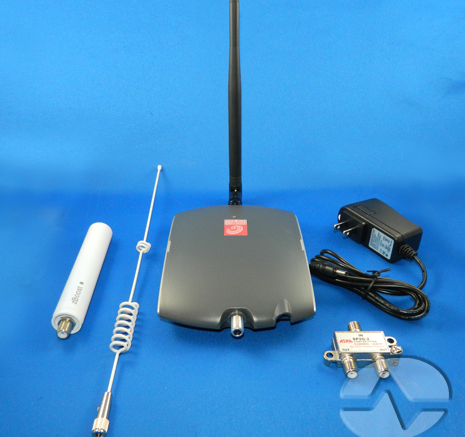Most people use Wi-Fi when at home. However, there are plenty of cases when wi-fi isn’t an option. Maybe you work in a small office and don’t want unsecured wi-fi connections. Maybe you don’t want to share your wi-fi with your visitors, but you have no choice since they get no cell service in your office.
No matter what the reason, you have always had the option of adding a cell booster such as Wi-Ex’s zBoost YX545. It’s a good general purpose booster that will give you voice and 3G data for all the major carriers (Nextel excluded, as their network is going away this year.) In today’s 4G world, though, 3G isn’t enough.
That’s why our friends over at Wi-Ex came up with the YX550. It’s a standalone 4G booster that works with specific carriers. At this point the only model available is for Verizon’s 4G networks but other versions are coming soon. Unlike 3G, there are so many different frequencies used for the highest speed that it’s just not cost effective to have one booster for them all.
The YX550 comes in a standalone kit and also in an upgrade kit for people who already have a Wi-Ex cell booster. In both cases the base units are the same as is most of the installation. The upgrade kit is designed to use the antenna wiring you already have and includes an upgraded antenna and a splitter so that one antenna cable can feed both the YX545 (or other Wi-Ex product) and the YX550. The standalone kit includes antenna cable rather than including the splitter; the base unit is the same either way.
I was lucky enough to get a YX550, plus all the bits necessary for either an upgrade or standalone operation. You might remember that I had a lot of fun with the YX545 in my review series last year... and now I’m ready to upgrade to a full data boosting setup. Back then I didn’t care about 4G but with my new phone it’s much more important.
Over the coming week or so I’ll be showing you how to work with the YX550, how to upgrade, and I’ll finish it off with a video showing how it’s all done. Stay tuned!





